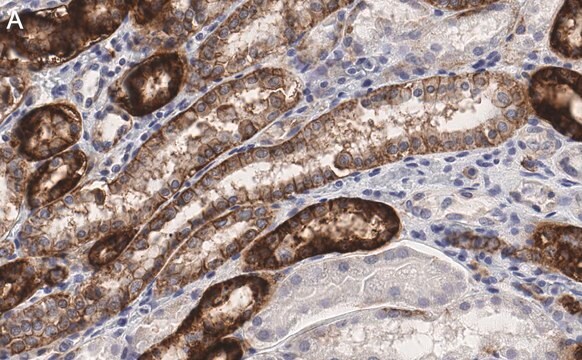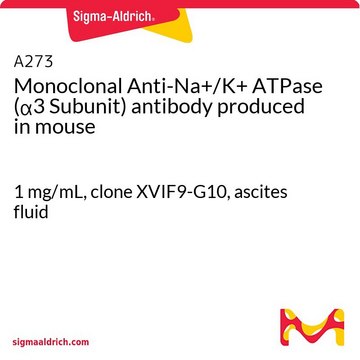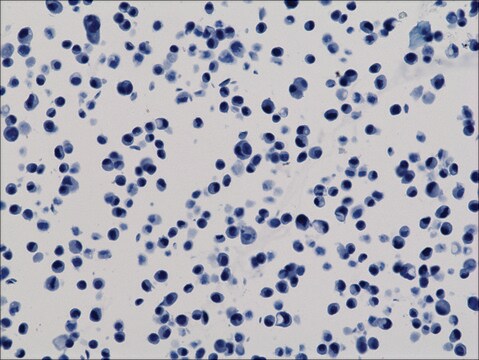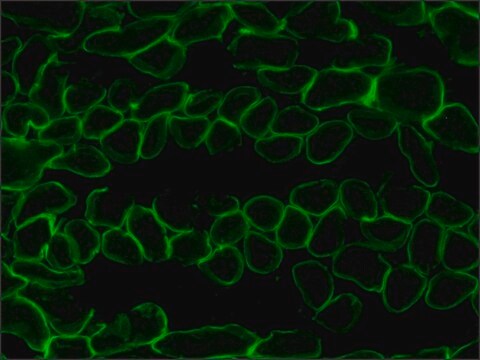A276
Monoclonal Anti-Na+/K+ ATPase (α Subunit) antibody produced in mouse
clone M7-PB-E9, ascites fluid
Sinonimo/i:
Anti-CMT2DD, Anti-HOMGSMR2
About This Item
Prodotti consigliati
Origine biologica
mouse
Livello qualitativo
Coniugato
unconjugated
Forma dell’anticorpo
ascites fluid
Tipo di anticorpo
primary antibodies
Clone
M7-PB-E9, monoclonal
PM
antigen ~110 kDa
Reattività contro le specie
canine, chicken, human, sheep, pig, bovine, mouse
Non deve reagire con
rat, Xenopus
tecniche
immunocytochemistry: suitable
immunofluorescence: 1:20
immunohistochemistry (frozen sections): 1:100
immunoprecipitation (IP): suitable
indirect ELISA: suitable
western blot: 1:500-1:5000
Isotipo
IgG1
N° accesso UniProt
Condizioni di spedizione
dry ice
Temperatura di conservazione
−20°C
modifica post-traduzionali bersaglio
unmodified
Informazioni sul gene
human ... ATP1A1(476)
Categorie correlate
Descrizione generale
Immunogeno
Applicazioni
Azioni biochim/fisiol
The different isoforms of the sodium/potassium ATPase exhibit tissue-specific and developmental patterns of expression. The α 1 and β mRNAs are present in all cell types examined, whereas the α 2 and α 3 mRNAs exhibit a more restricted pattern of cell-specific expression. The α subunit has been found in kidney, brain, heart, and to a lesser extent liver, skeletal and smooth muscle.
Descrizione del bersaglio
Stato fisico
Esclusione di responsabilità
Non trovi il prodotto giusto?
Prova il nostro Motore di ricerca dei prodotti.
Raccomandato
Codice della classe di stoccaggio
13 - Non Combustible Solids
Classe di pericolosità dell'acqua (WGK)
WGK 1
Punto d’infiammabilità (°F)
Not applicable
Punto d’infiammabilità (°C)
Not applicable
Dispositivi di protezione individuale
Eyeshields, Gloves, multi-purpose combination respirator cartridge (US)
Scegli una delle versioni più recenti:
Possiedi già questo prodotto?
I documenti relativi ai prodotti acquistati recentemente sono disponibili nell’Archivio dei documenti.
I clienti hanno visto anche
Il team dei nostri ricercatori vanta grande esperienza in tutte le aree della ricerca quali Life Science, scienza dei materiali, sintesi chimica, cromatografia, discipline analitiche, ecc..
Contatta l'Assistenza Tecnica.










